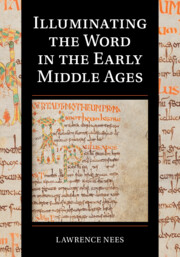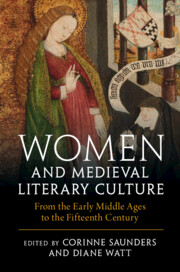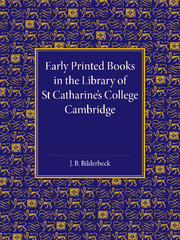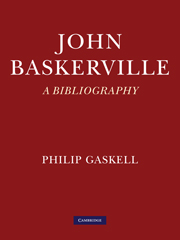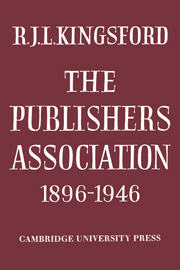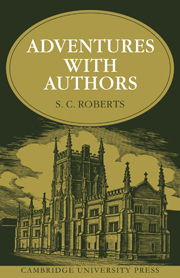Illuminating the Word in the Early Middle Ages
Part of Cambridge Studies in Palaeography and Codicology
- Author: Lawrence Nees, University of Delaware
- format: Adobe eBook Reader
- isbn: 9781009239578
Find out more about Cambridge eBooks
Adobe eBook Reader
Other available formats:
Looking for an inspection copy?
This title is not currently available for inspection. However, if you are interested in the title for your course we can consider offering an inspection copy. To register your interest please contact [email protected] providing details of the course you are teaching.
-
This richly illustrated study addresses the essential first steps in the development of the new phenomenon of the illuminated book, which innovatively introduced colourful large letters and ornamental frames as guides for the reader's access to the text. Tracing their surprising origins within late Roman reading practices, Lawrence Nees shows how these decorative features stand as ancestors to features of printed and electronic books we take for granted today, including font choice, word spacing, punctuation and sentence capitalisation. Two hundred photographs, nearly all in colour, illustrate and document the decisive change in design from ancient to medieval books. Featuring an extended discussion of the importance of race and ethnicity in twentieth-century historiography, this book argues that the first steps in the development of this new style of book were taken on the European continent within classical practices of reading and writing, and not as, usually presented, among the non-Roman 'barbarians'.
Read more- Exceptional colour reproductions allow finer appreciation of the nature and quality of manuscripts previously only accessible as low-quality or misleading black-and-white reproductions
- Connects the early development of book illumination with changes in reading practices between the ancient and early medieval cultures in western Europe, allowing the reader to see connections between the style and design of books, and the manner in which literary texts were taught and analyzed
- Addresses the alleged, even assumed, connection between the new stye of book decoration and the ethnicity of its creators, putting the study of manuscripts and reading into the larger context of modern conceptions of race and ethnicity and their impact upon scholarship
Reviews & endorsements
'Recommended.' J. Oliver, CHOICE
Customer reviews
Not yet reviewed
Be the first to review
Review was not posted due to profanity
×Product details
- format: Adobe eBook Reader
- isbn: 9781009239578
Table of Contents
1. The new medieval book and its heritage
2. The St Petersburg Gregory Manuscript and its ornament
3. Seeing and reading: the grammatical and rhetorical structure of text and image
4. Decorated words in Late Antiquity: roots of illumination
5. Illuminated manuscripts from Luxeuil and Bobbio
6. Early insular manuscripts in relation to the beginnings of book illumination
7. The beginnings of book illumination and the ethnic paradigm in modern historiography
8. Conclusion: the transformation of the book.
Sorry, this resource is locked
Please register or sign in to request access. If you are having problems accessing these resources please email [email protected]
Register Sign in» Proceed
You are now leaving the Cambridge University Press website. Your eBook purchase and download will be completed by our partner www.ebooks.com. Please see the permission section of the www.ebooks.com catalogue page for details of the print & copy limits on our eBooks.
Continue ×Are you sure you want to delete your account?
This cannot be undone.
Thank you for your feedback which will help us improve our service.
If you requested a response, we will make sure to get back to you shortly.
×
